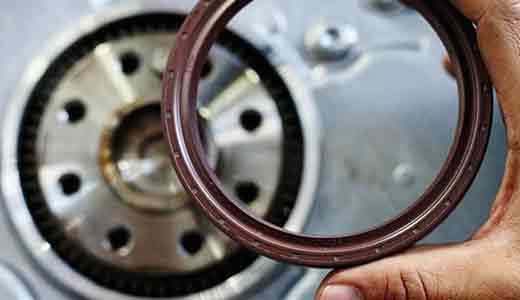Popular Information
Add: Yongkang st.renxian,xingtai city,hebei province china.054000
Tel:+86-319-7566977 7519805
Phone : +8613903298188
Fax:+86-319-7566976
E-mail :richard@bxseals.com
Understanding Hydraulic Seals: Key Components for Industrial Applications
Release Time:
Oct 04,2025
Hydraulic seals are vital components in the realm of industrial equipment, particularly in hydraulic systems. Their primary function is to prevent fluid leakage while maintaining the pressure necessary for the system to operate effectively. These seals can be found in various applications, ranging from heavy machinery and automotive systems to aerospace technology. Understanding the significance a
Hydraulic seals are vital components in the realm of industrial equipment, particularly in hydraulic systems. Their primary function is to prevent fluid leakage while maintaining the pressure necessary for the system to operate effectively. These seals can be found in various applications, ranging from heavy machinery and automotive systems to aerospace technology. Understanding the significance and functionality of hydraulic seals is crucial for anyone involved in industrial operations.
One of the main characteristics of hydraulic seals is their ability to withstand high pressures and harsh environments. They are typically made from materials that offer durability, such as polyurethane, nitrile, and fluorocarbon. The choice of material is essential, as it determines the seal's performance in specific conditions. For instance, in environments where temperature fluctuations are prevalent, selecting a seal that can endure extreme temperatures is critical.
When it comes to installation and maintenance, proper procedures must be followed to ensure the effectiveness of hydraulic seals. Incorrect installation can lead to premature failure, resulting in leaks and system inefficiencies. It is recommended to always inspect the sealing surfaces for any damage and to ensure that the seals are adequately lubricated before installation. Regular maintenance checks are also advisable to identify any signs of wear and tear, which can help in preventing operational disruptions.
Hydraulic seals perform several functions beyond merely keeping fluids contained. They also serve to protect the internal components of hydraulic systems from contamination. Dust, dirt, and other particles can cause significant damage if allowed to enter the system. Hydraulic seals act as barriers that keep these contaminants at bay, ensuring that the hydraulic fluid remains clean and effective.
Another important aspect to consider is the design of hydraulic seals. There are various types of seals, including static seals, dynamic seals, and rod seals, each tailored for specific applications. Static seals are used in applications where there is no relative motion between the parts being sealed, while dynamic seals are designed for areas where movement occurs. Understanding the differences between these types is crucial when selecting the appropriate seal for a specific application.
In summary, hydraulic seals are indispensable components in the performance of hydraulic systems across multiple industries. Their ability to prevent leaks, protect against contamination, and withstand challenging conditions makes them a cornerstone of industrial equipment functionality. By selecting the right type of hydraulic seal and adhering to proper installation and maintenance protocols, companies can ensure the longevity and efficiency of their hydraulic systems. Understanding these elements not only enhances operational reliability but also contributes to overall equipment performance.
One of the main characteristics of hydraulic seals is their ability to withstand high pressures and harsh environments. They are typically made from materials that offer durability, such as polyurethane, nitrile, and fluorocarbon. The choice of material is essential, as it determines the seal's performance in specific conditions. For instance, in environments where temperature fluctuations are prevalent, selecting a seal that can endure extreme temperatures is critical.
When it comes to installation and maintenance, proper procedures must be followed to ensure the effectiveness of hydraulic seals. Incorrect installation can lead to premature failure, resulting in leaks and system inefficiencies. It is recommended to always inspect the sealing surfaces for any damage and to ensure that the seals are adequately lubricated before installation. Regular maintenance checks are also advisable to identify any signs of wear and tear, which can help in preventing operational disruptions.
Hydraulic seals perform several functions beyond merely keeping fluids contained. They also serve to protect the internal components of hydraulic systems from contamination. Dust, dirt, and other particles can cause significant damage if allowed to enter the system. Hydraulic seals act as barriers that keep these contaminants at bay, ensuring that the hydraulic fluid remains clean and effective.
Another important aspect to consider is the design of hydraulic seals. There are various types of seals, including static seals, dynamic seals, and rod seals, each tailored for specific applications. Static seals are used in applications where there is no relative motion between the parts being sealed, while dynamic seals are designed for areas where movement occurs. Understanding the differences between these types is crucial when selecting the appropriate seal for a specific application.
In summary, hydraulic seals are indispensable components in the performance of hydraulic systems across multiple industries. Their ability to prevent leaks, protect against contamination, and withstand challenging conditions makes them a cornerstone of industrial equipment functionality. By selecting the right type of hydraulic seal and adhering to proper installation and maintenance protocols, companies can ensure the longevity and efficiency of their hydraulic systems. Understanding these elements not only enhances operational reliability but also contributes to overall equipment performance.
Key words:



